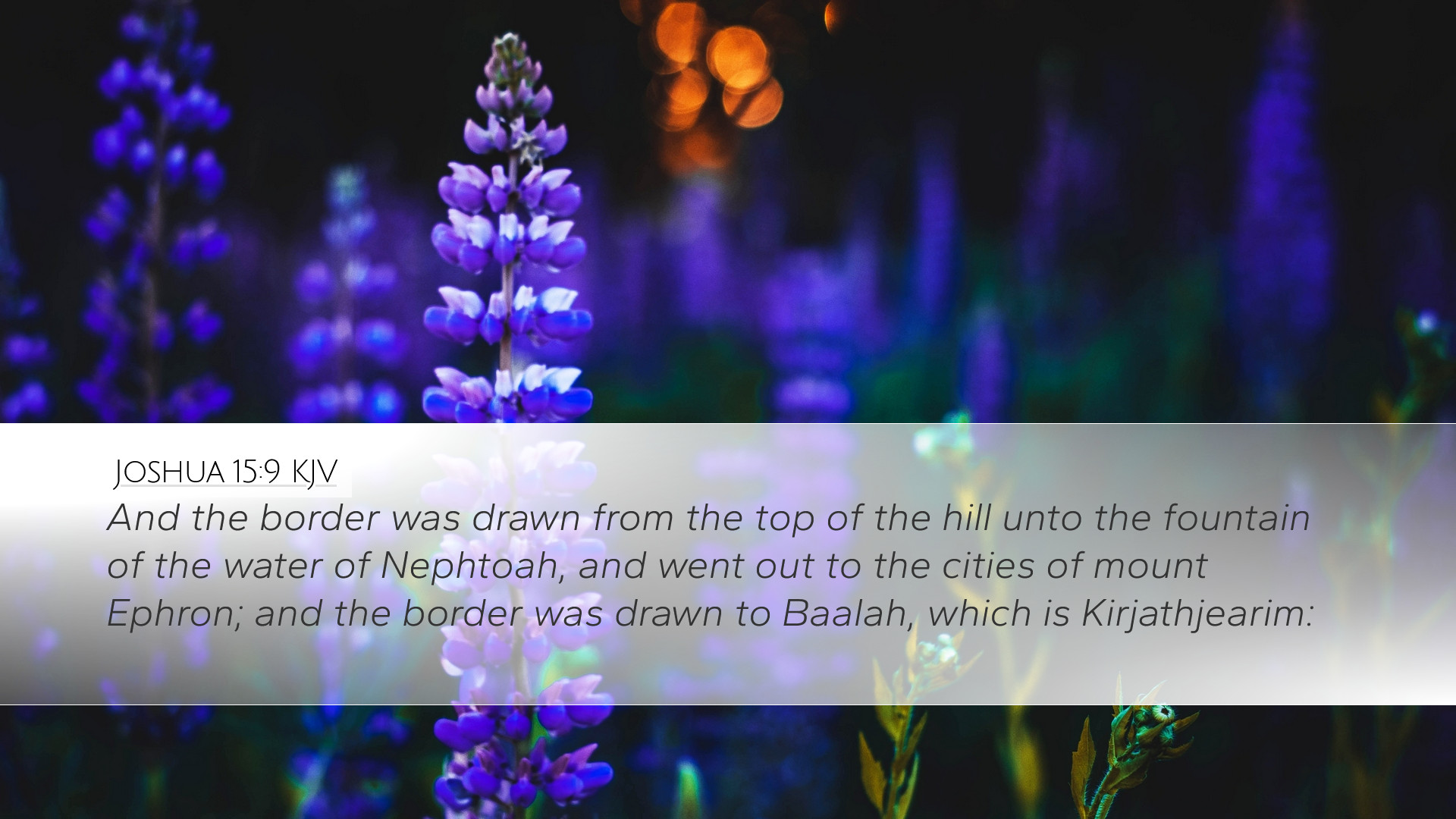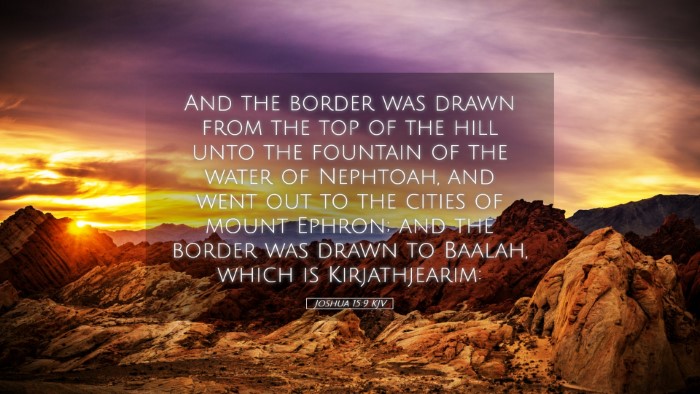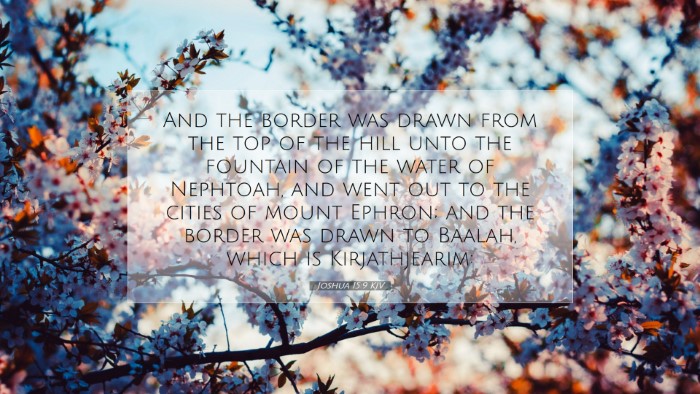Commentary on Joshua 15:9
Verse Text: "And the border went up toward Debir from the valley of Achor, and so northward, looking toward Gilgal, which is before the going up to Adummim, and the border went down to the stone of Bohan the son of Reuben."
Introduction
The border descriptions in the Book of Joshua serve a dual purpose: they document the division of land among the tribes and reflect God's promise to Israel regarding their inheritance. In this passage, Joshua 15:9, the territorial boundary of the tribe of Judah is described, highlighting the significance of geography in the biblical narrative and God’s plan for His people.
Geographical Significance
This verse details a specific geographic boundary that is crucial for understanding the historical context of the Israelites’ settlement in Canaan. The mention of Debir and Gilgal illustrates key locations that were integral to Israelite identity and worship.
Debir
Debir, known as the "Sanctuary" or "Word," represents both a physical and spiritual stronghold. According to Matthew Henry, Debir is not only a city but symbolizes a place where the Israelites could seek God’s guidance.
Gilgal
Gilgal, known as the first camping site after crossing the Jordan River, holds significance as a memorial of God's deliverance. Albert Barnes emphasizes that Gilgal marked the beginning of Israel's conquest of Canaan, serving as a spiritual reminder of their covenant with God.
Biblical Symbolism
The borders described in Scripture are often imbued with spiritual meaning. Adam Clarke notes that the territories not only indicate physical possession but reflect the spiritual inheritance promised to Israel. Each geographical marker stands as a testament to God's faithfulness to His covenant.
Theological Implications
Understanding the boundaries set forth in this verse reveals profound theological implications about God's justice and mercy. The allotment of land serves not only as a reward but as a reminder of God's sovereignty over His people and their responsibilities.
- The Sovereignty of God: Each border establishes God's sovereign choice in allotting land, emphasizing His authority in the lives of His people.
- Covenant Faithfulness: The boundary represents God’s commitment to fulfill His promises, echoing the covenant established with Abraham regarding his descendants.
Application for Believers
The details of land allocation provide meaningful lessons for contemporary believers. Here are a few applications derived from Joshua 15:9:
- The Importance of Place: Just as specific locations had significance in biblical times, believers are also called to recognize the places where God has called them.
- Seeking God's Guidance: The geographic references remind believers to seek God’s wisdom in their journey of life, understanding that God guides their paths.
- Inheritance in Christ: Just as Israel was given the land, Christians today are promised an inheritance through faith in Christ, a spiritual land of promise.
Conclusion
Joshua 15:9 serves as a vital section of Scripture that encapsulates the ongoing narrative of Israel's journey toward fulfillment of God's promises. By exploring the geographical, theological, and practical aspects of this verse, pastors, students, scholars, and theologians can gain deeper insights into the richness of God's word. The boundaries traced here not only illustrate a physical space but reflect a deeper spiritual journey. As we study God's word, may we be inspired to explore our own territories of faith and obedience, trusting in His promises for the future.


